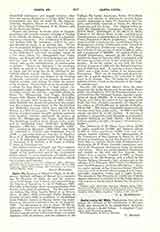

Santa Fe, Diocese of (SANCTAE FIDEI), in the Argentine Republic, suffragan of Buenos Aires, comprising the Province of Santa Fe and the gobernaciones of El Chaco and Formosa, was separated from the Diocese of Parana (q.v.) on February 15, 1897. Our Lady of Guadalupe (feast on second Sunday after Easter) is the diocesan patroness. The first and present bishop, Msgr. Juan Agustin Boneo (b. at Buenos Aires, June 23, 1845, preconized titular Bishop of Arsinoe, June 15, 1893, as coadjutor to Archbishop Leon Federico Aneiros of Buenos Aires), was transferred to the newly-established see on January 27, 1898. The diocese has an area of about 145,100 sq. miles and a population of 860,000 inhabitants, mostly Catholics. There are 65 parishes; 48 vice-parishes; 4 Indian mission centers; 143 secular clergy: a conciliar seminary with 45 students, and two students in the Collegio Pio Latino Americano, Rome; 52 Catholic colleges and schools, in addition to several Indian schools, orphanages at Santa Fe, Esperanza, and Rosario, and Catholic hospitals at Santa Fe, Rosario, Esperanza, and Las Rosas. The religious orders include the Dominicans, Franciscans, Fathers of the Sacred Heart, Missionaries of the Heart of Mary, Fathers of the Divine Word, Jesuits, and Salesians; Dominicanesses, Capuchin Sisters, Sisters of the Holy Union, Daughters of Maria Auxiliadora. Among the many Catholic societies are the Apostleship of Prayer, Workingmen’s Circles, Conferences of St. Vincent de Paul, and Priests’ Eucharistic League. The Province of Santa Fe has an area of about 51,000 sq. miles, and a population of 820,000. Its capital, Santa Fe (45,000 inhabitants), situated on the Rio Salado, founded by Juan de Garay in 1573, is associated with the most important events in the national life of Argentina. In its old cabildo, or city hall, the Constituent Congress of 1882 and the National Convention of 1860 were held. It contains a Jesuit Church (1654) and a large Jesuit College of the Immaculate Conception. There are 14 churches and chapels besides the 3 parish churches; the cathedral is dedicated to St. Joseph. The “El amigo del obrero” is published twice a week in the interests of the Catholic working man.
Rosario, 186 miles from Buenos Aires, the most important city in the diocese and the second in the republic, was founded in 1725 by Francisco Godoy, as a settlement for the Calchaqui Indians, and has a population of about 190,000. It is situated on the Rio Parana, and, being the center of the Argentine grain trade, has very extensive commerce, its exports being valued at £7,301,398 and its imports at £6,397,-579 in 1907. The town is beautifully constructed and contains many large public parks. In 1907 it had 130 schools attended by 15,563 children. It contains 4 parishes, 2 vice-parishes, and 22 public or semi-public chapels, including an Irish church. The Salesian Fathers publish a weekly newspaper “Cristoforo Colombo”.
The Territories of El Chaco (area about 52,700 sq. miles, population 25,000) and Formosa (about 41,400 sq. miles, population 15,000) from real missionary regions entrusted to the ministrations of the Franciscans of San Lorenzo in Santa Fe, of La Merced at Corrientes, and of San Francisco in Salta. They form a vicariate forane with headquarters at Resistencia, R. P. Pedro Iturralde, commissary general of the Franciscan missionaries, being the present vicar forane. There is a parish church at Resistencia and chapels at San Jose and San Antonio. The fathers have a mission (founded in 1900) at Nueva Pompeya on the Rio Bermejo, with a school for the Mataco Indians (40 pupils); they minister also in the colonies of La Florencia (Rio Teuco), La Buenaventura (Rio Pilcomayo), and Frias (Rio Berno). There is a native mission at San Francisco Solano (Rio Pilcomayo), with an Indian school equipped with forges, saw-mills, carpentry works, and a sugar factory. The mission at San Francisco de Laishi near Colonia Aquino (Formosa) is exclusively of the Tobas Indians, and contains a similar school directed by the missionaries.
A. A. MACERLEAN

